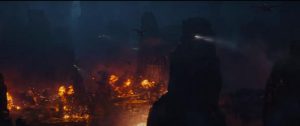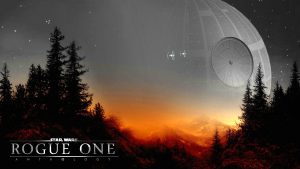quotation of the month: kitsch and death
Every frisson is a response to surprise, to an unexpected comparison or the revelation of a hitherto unnoticed reality. Here, it is the meeting of kitsch and death.
Kitsch, that >pinnacle of good taste in the absence of taste, of art in ugliness—a branch of mistletoe under the lamp in a railway waiting room, nickeled plate glass in a public place, artificial flowers gone astray in Whitechapel, a lunch box decorated with Vosges fir—everyday ‚Gemütlichkeit‘, art adapted to life where the function of the adaptation exceeds that of innovation. All this is kitsch, the hidden, tender, and sweet vice—and who can live without vices? And this is where its insinuating power and universality begin…<[1] (…)
It is the juxtaposition of the kitsch aesthetic and of the themes of death that creates the surprise, that special frisson so characteristic not only for the new discourse but also, it appears, of Nazism itself.
Is it necessary to see in this the will to reconstitute an atmosphere or a fascination? Both, no doubt. Beneath today’s reflection, one catches a glimpse of certain fundamental components of yesterday’s Nazi hold on the imagination.
There is a kitsch of death. (…) The death of heroes, too (…). There is even a kitsch of the apocalypse: the livid sky slashed by immense purple reflections, flames surging from cities, flocks and men fleeing toward the glowing horizon, and far, very far away, four horsemen. And yet this kitsch of death, of destruction, of apocalypse is a special kitsch, a representation of reality that does not integrate into the vision of ordinary kitsch. (…)
As I have just mentioned, whatever the kitsch images are surrounding one, death creates an authentic feeling of loneliness and dread. Basically, at the level of individual experience, kitsch and death remain incompatible. The juxtaposition of these two contradictory elements represents the foundation of a certain religious aesthetic, and, in my opinion, the bedrock of Nazi aesthetics as well as the new evocation of Nazism. (p. 25-26 )
Now, this fusion is only the expression of a kind of malaise in civilisation, linked to the acceptance of civilization, but also to its fundamental rejection. Modern society and the bourgeois order are perceived both as an accomplishment and as an unbearable yoke. Hence this constant coming and going between the need for submission and the reveries of total destruction, between love of harmony and the phantasms of apocalypse, between the enchantment of Good Friday and the twilight of the gods. Submission nourishes fury, fury clears its conscience in the submission. To these opposing needs, Nazism—in the constant duality of its representations—offers an outlet; in fact, Nazism found itself to be the expression of these opposing needs. Today these aspirations are still there, and their reflections in the imaginary as well. (…)
Neither liberalism nor Marxism responds to man’s archaic fear of the transgression of some limits of knowledge and power (you shall not eat the fruit…), thus hiding what remains the fundamental temptation: the aspiration for total power, which, by definition, is the supreme transgression, the ultimate challenge, the superhuman combat that can be settled only by death. (pp. 135-136)
In: Saul Friedländer: Reflections of Nazism. An Essay on Kitsch & Death. New York, 1984.
[1] Abraham Moles. Psychology of Kitsch. The Art of Happiness. Paris: Denoel, 1971, pp.19-20



